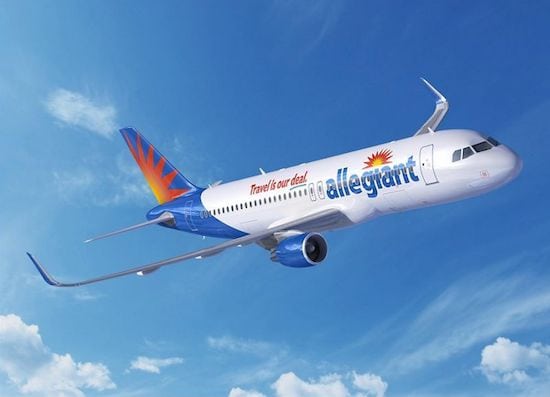
Computer rendering of an Allegiant Air Airbus A320. Photo courtesy of Airbus
Allegiant Air is one of many U.S.-based commercial airlines that is in the process of equipping its fleet of aircraft to comply with the FAA’s Jan. 1, 2020, ADS-B Out equipage mandate. According to the FAA’s latest available data, a total of 1,455 commercial aircraft are currently equipped with rule-compliant ADS-B avionics as of Nov. 1, 2017.
The Las Vegas-based airline also is currently investing more than $1 billion into a new fleet of Airbus A320s and A319s that will eventually replace its retiring fleet of MD-80s.
Ahead of his upcoming presentation at the Avionics for NextGen conference Nov. 15 to 16 at the Hilton Washington Dulles, Allegiant Air Director of Engineering Ankit Nanda shares how the low-cost carrier is equipping its fleet with ADS-B and other NextGen avionics.
You will be presenting twice at the conference: Once on an ADS-B Out panel and once in a presentation spotlighting Allegiant Air’s NextGen program. What NextGen technologies are you planning to equip? More than ADS-B Out?
ADS-B is our primary NextGen program; however, we are studying the possibility of streaming weather in the cockpit. Other than that, our Airbus fleet is equipped for CPDLC, and we are evaluating its use in our operations.
Do you think Allegiant Air’s approach to NextGen equipage is different than others? If so, how?
As a ULCC, Allegiant teamed with industry partner Rockwell Collins to equip the Allegiant Airbus Fleet for the lowest cost possible with high-quality reliable equipment.
Since we have Airbus aircraft from various sources, the solution needs to be something that would be seamless to the flight crew regardless of the aircraft they operate. We have two solutions that we would need to implement to meet the ADS-B Out requirements.
One of them involves the solution as offered by Rockwell Collins. We have a few aircraft that require an alternate solution as the cost of upgrading all the equipment would be too high. For those aircraft we are working on our own STC solution. Being able to obtain our own STC allows us to get these aircraft up and running soon. More importantly, if we get additional aircraft in the same boat later on, it would allow us to quickly implement a solution that we are already familiar with.
Has there been any particular aircraft that has taken the most time and attention to equip?
Allegiant has two A320 that are not equipped with multi-mode receivers and so not part of the Rockwell Collins project. These two aircraft will be made compliant by an in-house Allegiant STC using the Collins DO-260B Transponder and FreeFlight SBAS/WAAS GPS.
Have there been any surprises, either good or bad, in the process of complying with the 2020 mandate?
The biggest surprise is that several major avionics companies do not have ADS-B-complaint equipment for air transport aircraft two years before the mandate, and some won’t have it until after 2020. This made choosing an equipment vendor very difficult. Along with using the cost and reliability information on the units as a deciding factor, we have definitely had to do a lot more of a risk study to ensure that the operation is not affected by these drivers.
Do you think there are any misconceptions — by the industry or the regulator — about NextGen technologies/compliance/equipage?
Yes, in the general aviation community there are numerous options for ADS-B equipment, and it is readily available. That has proven to not be true for the air transport industry, which has been challenging.
Is there anything else you’d like readers to know about the subject you’ll be covering in your Avionics for NextGen presentation?
The key piece in all of this for us has been to get a complete understanding of FAA exemption 12555. This was definitely something that helped us make our decisions as we move forward with this project.